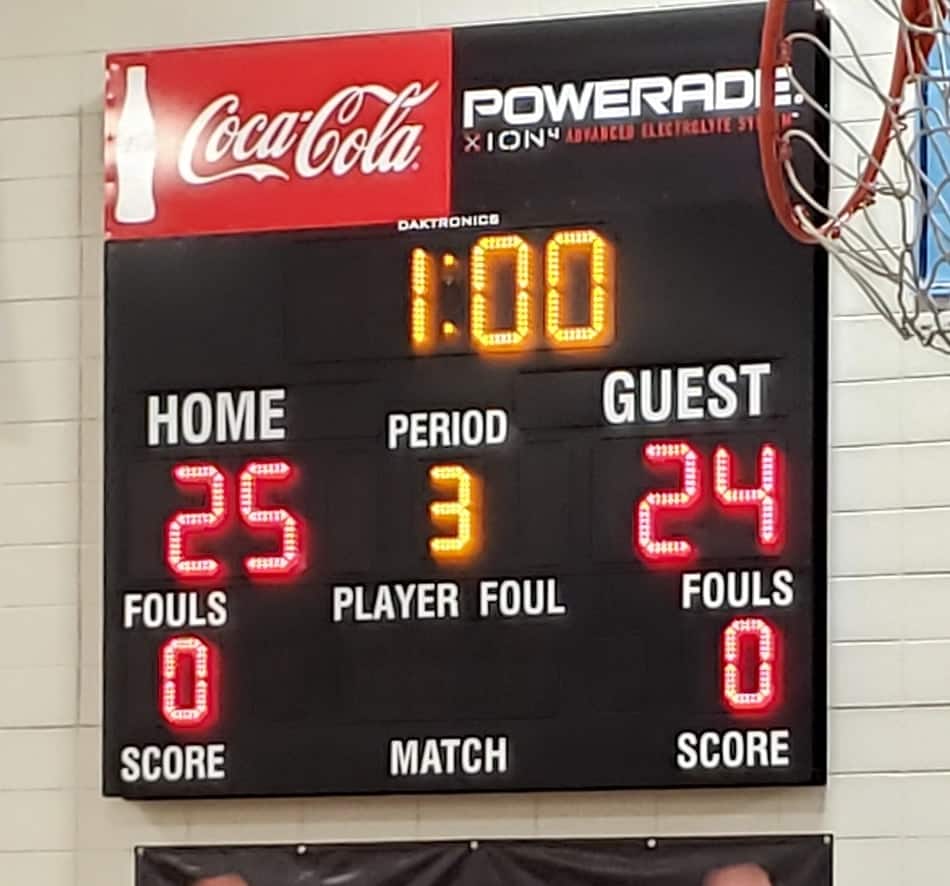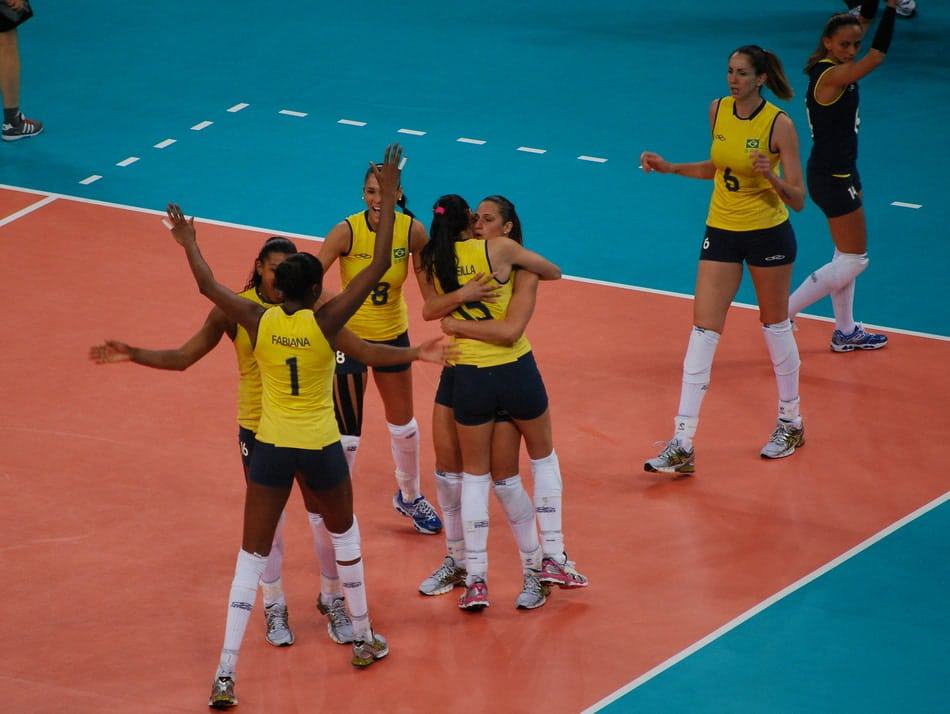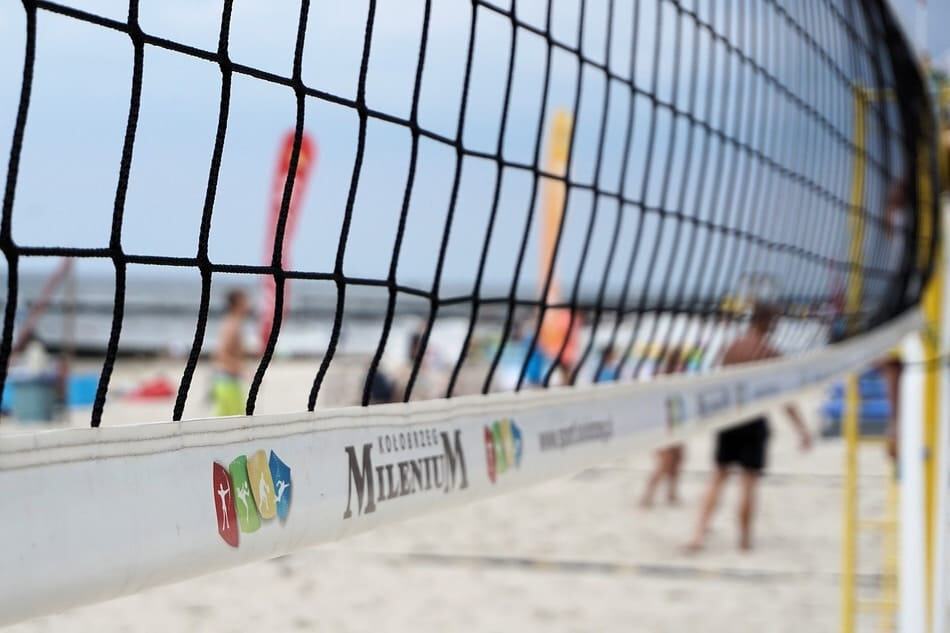There are many rules in volleyball, but the game point rules are fairly simple. These rules at least, are consistent throughout volleyball wherever the game is played.
In volleyball, the team who scores the game-winning point must always be winning by two. When a team scores 25, if they are not leading by 2 points, the game continues until one team is winning by a two-point lead. So it’s very common to see a final score of 26-24 or 27-25.

There are several other scoring questions and game-winning questions that you may find helpful. To discuss these, it’s better to first understand the basic scoring system.
What Is Rally Scoring In Volleyball?
Rally scoring is the scoring system that is used throughout the volleyball world today. Many people can remember back to when volleyball was played under an old system called side-out scoring. You can read about that in the section below.
The rally scoring system in volleyball is where every single rally results in a point being awarded to one team or the other. For example, if your team is serving and you fail to serve properly, the other team wins a point. Or another example, if your team is out of the rotation as the service is being made, the play will be whistled dead and your opponent will be awarded the point.

Also, in this system, whoever wins the rally not only wins the point but serves the next play.
Some people find this very frustrating, because the other team has done nothing to deserve or earn a point, yet they get that point because you have failed.
One reason this is hard to watch sometimes is that you’ll see teams cheering that the other team messed up. They’ll be congratulating themselves and they’ve done nothing to deserve it. This is especially hard to watch with the younger age groups.
Would you like to shop for our favorite recommended player products? Choose the item below and click to shop on Amazon.
The other situation where this is very tough to watch is when a team wins on the opponent’s mistake. Especially during a fierce, close match, it seems so unjust to watch a team lose based on a failed serve or an out-of-rotation violation. The rules are fair, but it just seems like an unfair way to end the game.
What Is Side Out Scoring?
Side out scoring was the old scoring system in volleyball before the rally scoring system was put in place. Basically, the difference is that you had to have possession of the serve and win the rally to gain a point.
So in this system, a game could go on and on without any points being scored if the teams just traded turns serving and losing the rallies. Under this system, you still had to win by 2, so games could go on quite long.
Eventually, many leagues and tournaments would implement a maximum point total at 17 points. So the rule became that you had to win by 2, or first team to 17.
In rally scoring the total score needed to win was raised from the old total of 15 to now being 25. But because of the frequency of the points, the games are actually shorter. The other benefit is that the length of the games is much more consistent and predictable. This helps with scheduling and planning games, especially for tournaments and television.
How Many Points Are Needed To Win The Game?
In indoor volleyball, the games are played to a total of 25 points for each set except the tie-breaker set. This final set will be played to 15 points. But again, regardless of what the total is supposed to be, if you’re not winning by at least 2 points, the game will continue.

How Many Sets Do We Need To Win For The Match?
In younger ages, the matches are played to the best of 3, so the third set (if it is needed to be played) would be the tie-breaker set.
In older age groups all the way up to international play, the matches are played to the best of 5 sets. So if the teams are tied 2-2, the tie-breaker set would be the 5th set.
If you’d like to read more details about how many sets you need to win in different situations, check out this post called Is Volleyball Best of 3 or Best of 5?
What Is The Volleyball Scoring Sheet?
The scoring sheet is a way to help streamline volleyball scorekeeping. The job of scorekeeping is more than just tallying the points.
The scorekeeper also tracks player rotation (the line-up), substitutions, timeouts, delay sanctions, penalties, side switches, and the time the games are started and ended.
The scoring sheet is one place where all this information is condensed down to keep it easy to manage, tally throughout the game, and report afterward.
The sheet also records the information of the teams, the captains, and the referees.
Scoring sheets come from a Scorebook. If you’re looking for a Scorebook, you can find our recommendations for both indoor and beach on our Scorebooks page.
Is Beach Volleyball Scoring Different?
In beach volleyball, the scoring is a little different. The rally scoring is still in effect and works just the same. The game point rules are exactly the same as well.

The differences are mainly three things:
1. The sets are played to the best of 3.
2. The first 2 sets are played to a score total of 21, win by 2.
3. The tie-breaker set is played to 15, win by 2.
Related Questions
When Did Volleyball Rules Change?
Actually, the rules in volleyball change and get updated by the Federation Internationale de Volleyball (FIVB) about every 4 years. This international body governs the rules of volleyball at the global level.
The most recent edition of the rules is for 2017 to 2020 and can be found here.
What Other Sports Have A Win By 2 Rules?
Table Tennis, also known as Ping-pong – A match in table tennis is played to a best of 5, 7, or 9 games. Sets are played to 11 points but you must also win by 2.
Tennis – In tennis, the match is divided up into sets and the sets are divided up into games. To win a game, you need to score 4 points.
The first point is “15”. The second is “30. The third point is “40”. The fourth point wins
Once a deuce is reached, play continues until one player wins by 2 points. This is tracked by after a point is scored out of deuce, the player who wins the point will be declared to have the “advantage”. If that player loses the point it goes back to deuce. If they win it, they have won by a 2 point margin.
Badminton – Matches in badminton are played in a best of 3 sets played to 21 points. In badminton, when the score gets to 20, the first person or team to lead by 2 wins. If the game continues on, whoever scores the 30th point first wins the game.

Streetball – Streetball is a variation of basketball that’s played outdoors all over the world. While the rules vary widely from location to location, it is very common for games to follow a win by 2 system.
Spikeball – In spikeball, the games are usually played to 11, 15, or 21 points. Most settings call for the winning team to win by 2 points.
How Long Is A Volleyball Match?
The length of a volleyball match really depends on 2 factors:
1. How many sets are required to win the match?
2. How close is skill level are the teams?
Depending on the format, teams may have to win 2 out of 3 sets or 3 out of 5 sets. This will greatly affect the time it takes to complete the match. In our experience, the best of 3 matches typically take 30 to 45 mins and the best of 5 usually takes 45 to 75 mins.
Which end of those ranges you end up on depends on how closely the teams play, in skill level. If they are very competitive you will likely go all the way to a tie-breaker set and each of the sets will have competitive scores which means more points were played during those games.
F
Photo credits:
Notre Dame image by Keith Allison on flickr.com: https://creativecommons.org/licenses/by-sa/2.0/
Brazil celebrating image by Matt Sims on flickr.com: https://creativecommons.org/licenses/by/2.0/, cropped.
Beach net image by Andreas Lischka from Pixabay
Badminton image by Vlad Vasnetsov from Pixabay
Recent Posts
Athletes, listen up! Do you have a closet full of old jerseys, sweatpants, and tees that you just can't seem to part with? Well, dust them off, because you're sitting on a goldmine of fashion...
You may have heard, or you may have noticed, that there's been a change to the rule about double contact in volleyball. In 2022, an experimental rule change began to be implemented, where the double...
